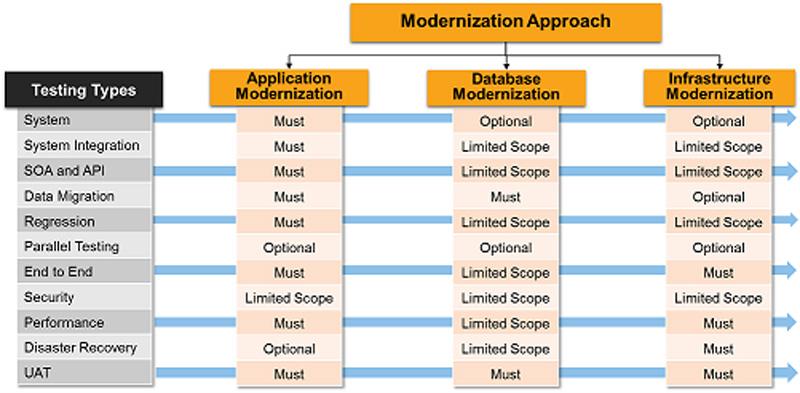-
-
Like what you see?
LetsTalkUrl
Let's Talk
In part 1 of this series, I discussed the key characteristics of modern IT systems and the various approaches for building such systems – Re-host, Re-write/Reengineer, Replace, Retain.
In part 2, I outlined how to understand the legacy system better and how to select the right modernization approach.
In this blog, I’ll discuss the various factors that should be considered by an agency as it chooses a modernization approach, and how should such a complex program be executed and tested.
Each modernization option requires a separate planning exercise. There may be cases where the tactics may overlap. Identification of these overlaps can help an agency optimize its modernization efforts. From our experience, the following things should be considered by an agency depending on the modernization option/tactic employed.
| Modernization tactic | When is this approach applicable & key factors to consider while planning the modernization exercise |
|---|---|
| Re-host |
|
| Re-write/Re-engineer |
|
| Replace |
|
| Retain |
|
Executing a modernization program requires agencies to focus on multiple things – technology, implementation approach, governance, program management, change management, and communication. Before executing the program, agencies should ensure that:
The pace of change driven by the digital imperative has made the selection of the implementation approach very important.
Modernization happens in phases (or releases) and is a continuous journey. The right implementation approach balances predictable and timely execution with the agility to adapt to changes. It breaks down the entire program into small, manageable pieces, ensures effective management of those pieces, keeps all the key stakeholders engaged and facilitates rapid adoption of the new system.
Here are some key elements that an agency should consider while choosing the right approach to execute its modernization program.
You can refer our point of view, Delivering large IT programs – Choosing the right implementation approach, for more details on selecting the right execution approach.
Agencies understand the need to comprehensively test the systems before taking them live. However, they fail to execute this effectively. Many things may go wrong like, incorrect testing approach, inadequate testing, long cycle time, or lack of integration between systems etc. Not only do agencies need to ensure that the right systems are tested at the right time but also that the testing cycle keeps up with the development cycle. This becomes even more important if an agency uses an agile or an iterative approach.
Agencies need to define and execute their testing strategy based on what they modernize (e.g. application, database or infrastructure). The diagram below maps testing types with modernization approaches.

Figure 1: Testing for Different Modernization Programs
Agencies can accelerate testing by amplifying human effort with automated toolsets from organizations like HP or IBM. Such tools not only accelerate various phases of the testing cycle like design, execution and reporting but also ensure comprehensive coverage. For example, we have used tools like GenTuf to automate test case creation based on the UML model created as part of the modernization initiative. This enabled us to accelerate the testing process by up to 30% and helped our client build a case to adopt automation and DevOps.
Read part 4 for Managing modern systems
You can also contact us to learn more about our comprehensive suite of legacy modernization services and solutions that is helping public sector organizations successfully navigate their modernization programs.

Sandesh has been managing large Federal and State Clients. He has managed to work and lead the client on large engagements around 1) Legacy Modernization 2) Cloud Enablement and Migration 3) Blockchain 4) Salesforce based Contact tracing and Vaccination passport 5) Robotic process automation to enable process refinement 6)Organization based Agile enablement and adoption He has been instrumental in growing business relationships with current clients and assist in bringing new clients on board.